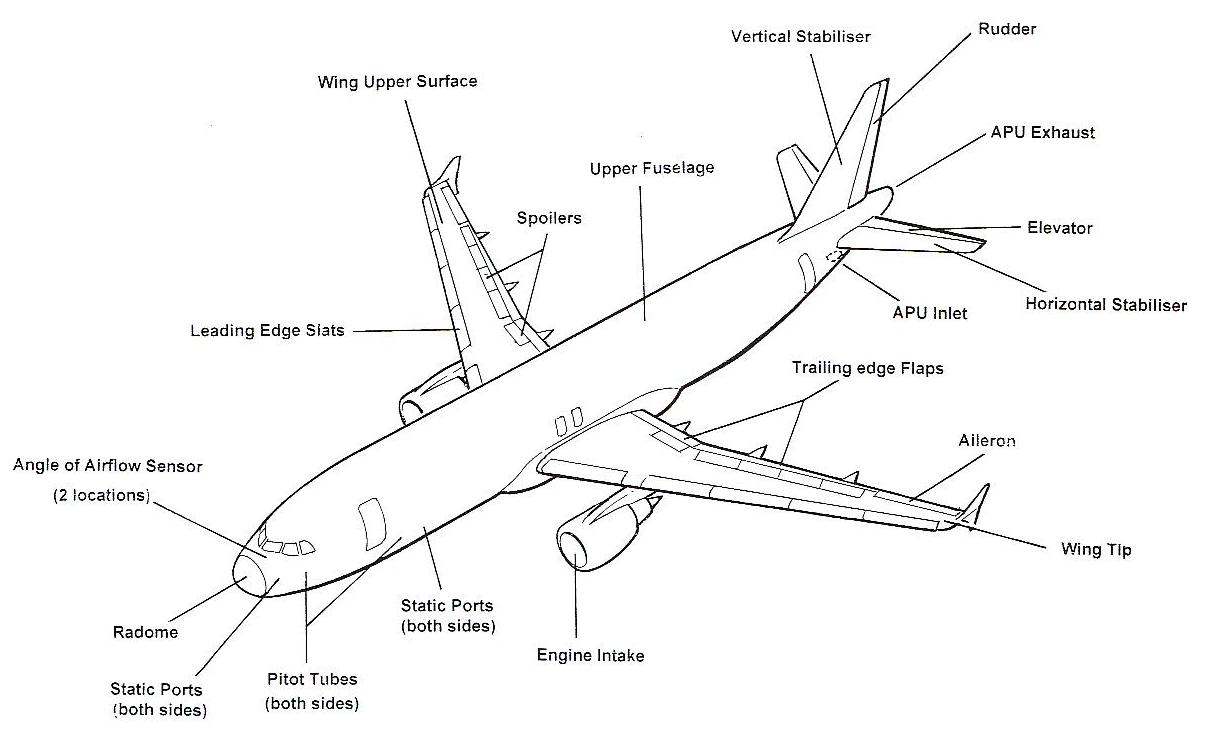Aircraft is composed of different parts. When you own a
plane, you’ve got to form positive that you
just not solely verify the sub-parts and
therefore the main elements of the
plane, however the spare elements that will be used when
one part fails.
The aim of this section is to grow awareness about the importance of each
part no matter how small it is.
1. THE FUSELAGE
It holds the structure together and accommodates passengers and/or cargo.
Modern craft bodies could accommodate up to 800
passengers in the economy category (e.g. A380) and up to 112,700kg
cargo (e.g. B747-400ER).
The cockpit holds the command and control section of an airplane. Modern
aircraft cockpits have a number of vital instruments for controlling the
airplane on the ground as well as when flying.
2. POWER-PLANT AND UNDERCARRIAGE-
Engines generate thrust and supply hydraulic and wattage.
Modern craft square measures used with different
kinds of engines, although jet engines are favored by most commercial
airliners.
The support, also known as landing gear, provides a platform for the
aircraft to stand as well as plays an important obvious role in landing
and take-off.
3. WINGS-
Wings generate elevate and management of
the flow whereas flying. Wing style could be
a crucial consider aviation: a wing is
intended to scale back drag at the vanguard, generate
lift by its crescent and manage airflow using the rear edge.
Furthermore, while gliding (i.e. without engine power), the
wings enable the pilot to extend and reduce the
descent rate. It adjusts the angle of attack of the wings, increasing
lift.
Slats square measure fitted at the leading edges of the wings,
and deploying them increases the angle of attack of the wings, allowing
the pilot to increase the lift generated by the wing.
Flaps
It adjusts the camber of the wings, increasing lift. Flaps square
measure usually fitted at the edge of the wings.
Extending the flaps increase the camber of the wing’s airfoil, thus
increasing lift at lower speeds, an important feature for landing.
Spoilers
It adjusts the camber of sections of the wings, decreasing lift.
Spoilers square measure fitted on high of the wings,
and square measure wont to scale
back elevate on a district of the wing in an
exceedingly controlled manner. Spoilers square
measure helpful for decreasing elevate while
not increasing the velocity of
the plane or while not increasing
drag considerably.
Ailerons
It increases or decreases lift asymmetrically, in order to change roll
and, thus, move the aircraft left or right while flying.
Ailerons square measure hinged sections fitted at the
rear of every wing.
Ailerons work asymmetrically as a pair: because
the right airfoil goes up, the left one comes down and vice
versa, thus making the aircraft roll right or left, respectively.
4. TAIL-
The horizontal stabilizer
It helps maintain an airplane’s equilibrium and stability in flight.
It will therefore by providing a mini wing
at a particular distance from the most wings
(typically at the rear, although it can also be positioned at the
front of the aircraft). This smaller wing produces enough to
elevate to manage the pitch of the craft and maintain
its stability.
Although an aircraft without a horizontal stabilizer could, in principle,
fly with wings only, controlling its pitch and airspeed would be
difficult, as pitch and, subsequently, airspeed can be easily disturbed by
air conditions: as before long because
the craft pitches up, the tendency is to continue pitching up
even further and decrease airspeed; and as soon as the aircraft pitches
down, the tendency then is to continue pitching down even further and
increase airspeed. An aircraft with a horizontal stabilizer, however,
could be flown hand-offs (once correctly trimmed) without affecting its
pitch and speed.
Elevators
It increases or decreases lift on the horizontal stabilizer symmetrically
in order to control the pitch motion of an airplane. Elevators are hinged
surfaces fitted at the rear of the horizontal stabilizer.
They work symmetrically as a pair: once the
elevators square measure up, the aircraft ascends; when the
elevators are down, the aircraft descends, and when the elevators are
horizontal, the aircraft flies straight.
The vertical stabilizer
It prevents the lateral movements of the airplane. Without
a vertical stabilizer, most aircraft would lose lateral control, tend
to slip, increase drag, and become uncontrollable.
The rudder
It controls the yaw motion of an airplane. The rudder is a hinged
surface fitted to the vertical stabilizer. When the rudder is turned to
the left, the aircraft turns to the left in the horizontal plane; when
the rudder is turned to the right, the aircraft turns to the right.
The rudder is employed to show the craft left
or right at the bottom. In the air, however, the rudder is
primarily wont to coordinate left and right turns (the turns
themselves square measure through with the ailerons) or to
counter adverse yaw (e.g. when crosswinds push the airplane
sideways).










No comments